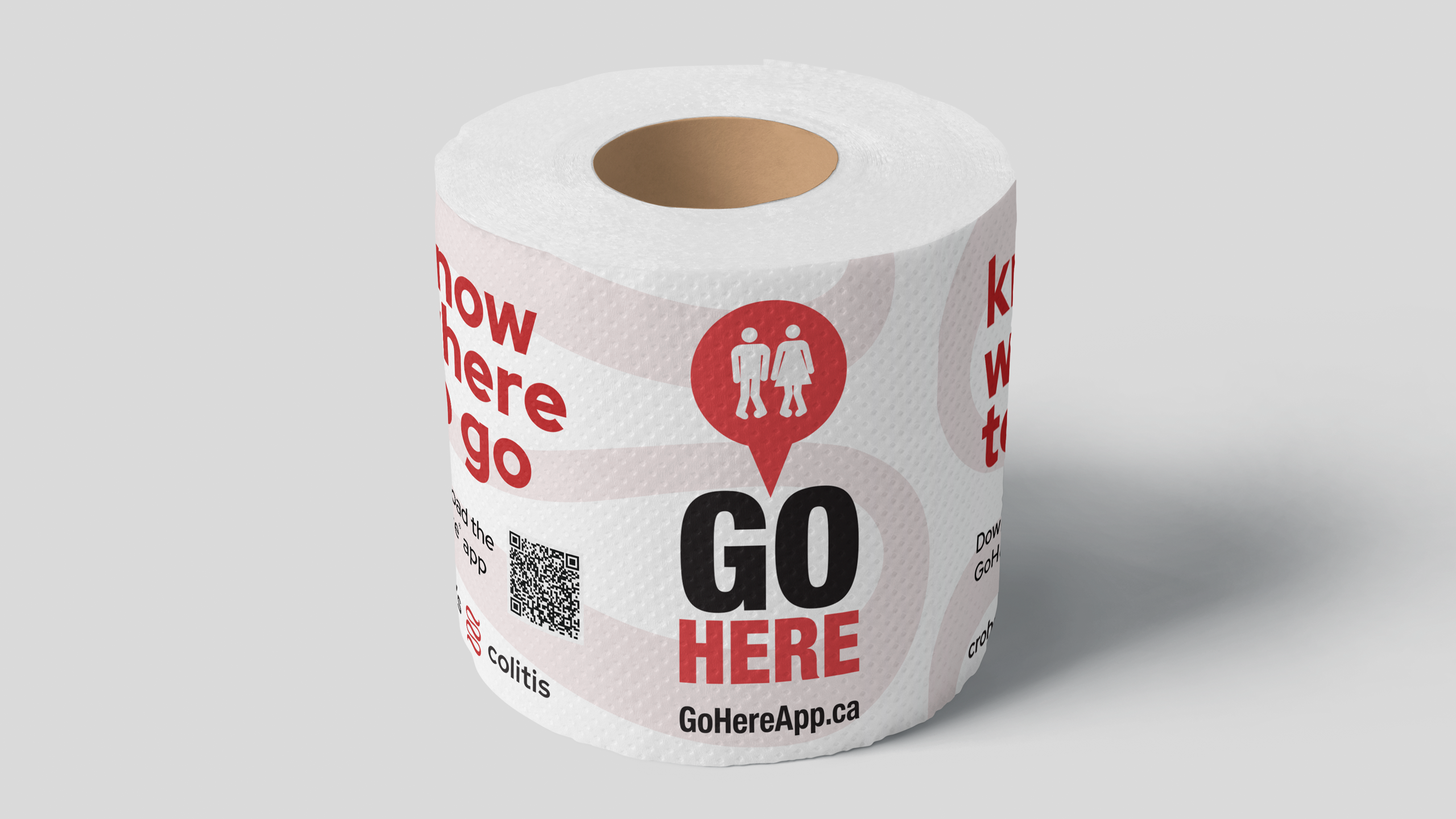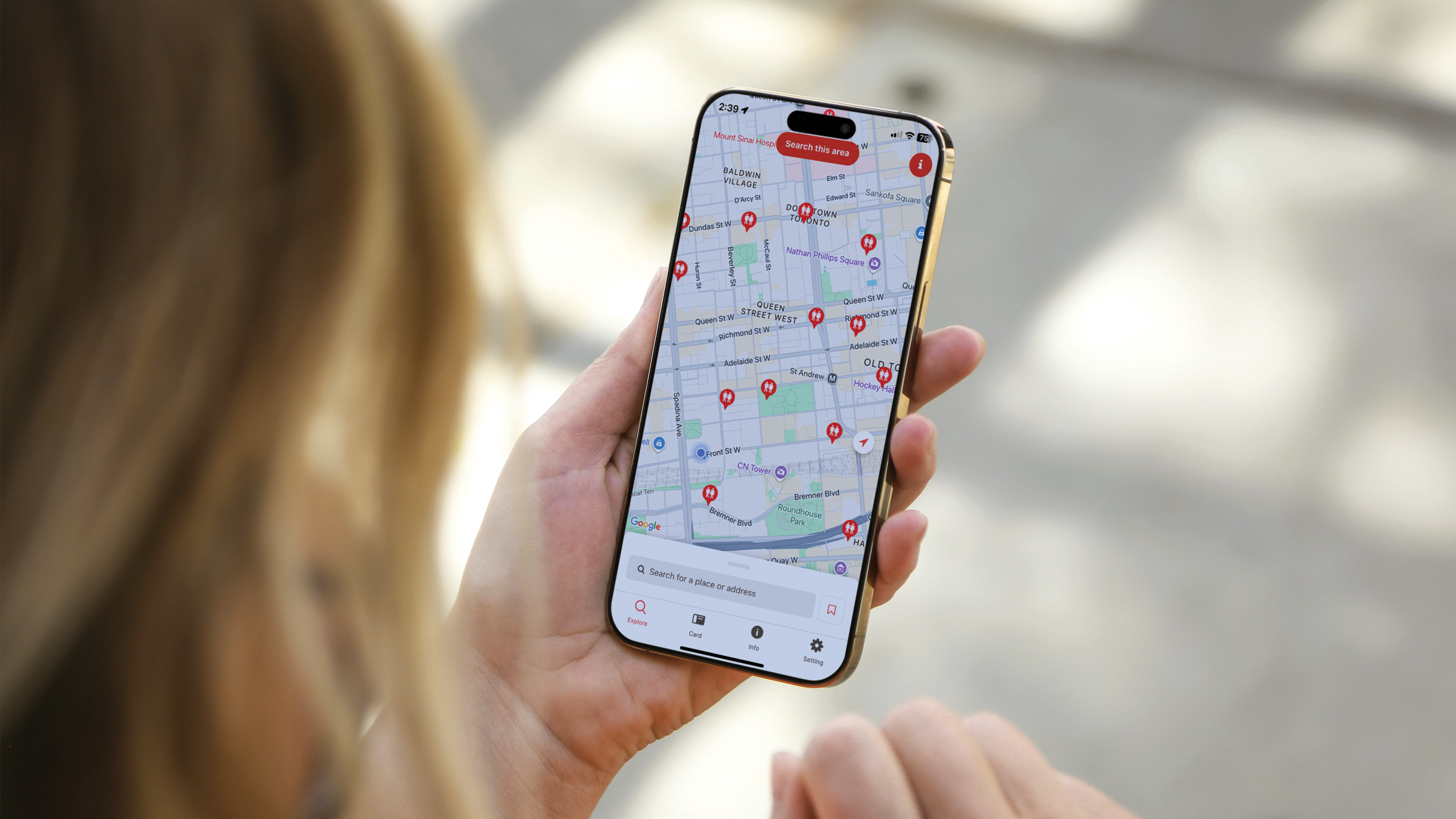Breaking down Inflammatory Bowel Disease (IBD) stigma through engagement and action

Challenge
The Locked Out campaign faced several challenges to raise awareness for IBD and public washroom accessibility. The activation — a real portable toilet placed in a public space — often led to preconceived assumptions, mirroring the stigma those with IBD face when seeking washrooms. This reinforced the need for targeted engagement to shift perceptions.
Stigma remains a barrier, as understanding of IBD, its symptoms and patient experiences are often overlooked. Positioning the stunt within Crohn’s and Colitis Awareness Month and sharing educational information was essential to breaking down misconceptions. The campaign relied on knowledgeable event staff to effectively communicate the message, which was supported by QR codes, signage, and live app demonstrations to ensure accessibility and education.
Engaging passers-by required adaptable strategies to capture attention and encourage participation. Crohn’s and Colitis Canada’s network of advocates played a key role in staffing the event, providing credible voices to reinforce the campaign’s message. Maximizing visibility required a strategic mix of organic and paid social content, ensuring reach beyond the physical activation. Targeted media outreach focused on Toronto to optimize resources and drive coverage, reinforcing the campaign’s urgency and impact.
Insight
To effectively engage key stakeholders and promote the GoHere® app during Crohn’s and Colitis Awareness Month, we analyzed and applied existing research on the needs and challenges of those who live with IBD. It was important to understand disease prevalence and patient experiences to ensure our program resonated with audiences. We examined insights into public washroom access barriers, stigma, and the need for real-time solutions, ensuring our messaging addressed the most pressing concerns. We also leveraged Vividata research to deepen our understanding of audience behaviors and media consumption patterns. These insights guided our strategic approach, enabling us to craft compelling content, target key demographics, and maximize engagement across multiple channels.
IBD Patients
IBD diagnosis rates in Canada are increasing – and so are the needs for support. There is no cure for IBD. Approximately 322,000 Canadians live with IBD, with new diagnoses every 48 minutes. Patients experience lifestyle impacts, including chronic abdominal pain, frequent bathroom visits, and fatigue.1 Addressing IBD requires a thoughtful, sensitive, and real approach to the stigma that patients experience. Our strategy balanced empathy with practical solutions to drive engagement and app downloads.
Additional research findings: IBD often develops in young adults, typically between 16 and 35 years old, but can occur at any age. A second peak may occur in individuals over 60. Both men and women are equally affected.1 Patients experience significant lifestyle and psychosocial impacts such as mental health, diet and nutrition, and work and social life; Psychiatric disorders frequently occur among those with IBD: An estimated 21% have clinical anxiety; and an estimated 15% have clinical depression.2
News and social media consumption habits: Mobile (hours per week)3: Gen Z: 16.8; Millennial: 10.1; Gen X: 12.8; Social applications (hours per week)3: Gen Z: 15.8; Millennial: 15.1; Gen X: 8.2; TV (hours per week)3: Gen Z: 14.4; Millennial: 17.5; Gen X: 16.5; Online (hours per week)3: Gen Z: 28.7; Millennial: 25.6; Gen X: 24.7.
IBD Caregivers
Those who care for individuals who live with IBD, usually family members, close friends or partners of those diagnosed. Research revealed that 56 per cent of caregivers feel exhausted from caregiving duties, and 44% report anxiety.4 Women are more likely to take on the caregiver role for children with IBD.5 IBD caregivers in Canada are essential to the well-being of individuals living with the condition. We needed to show support for the care they provide and make them aware of the GoHere® app to increase downloads and usage.
Policymakers: Those who shape public policy and address issues through legislation and decision-making. For non-profit organizations, this audience can influence resources, support advocacy efforts and shape the broader environment in which Crohn’s and Colitis Canada operates. Engagement with policymakers was essential to raise awareness and garner support for washroom accessibility initiatives in a sensitive way to make it easy for this audience to share our messages. We needed a demonstration of local political support to increase awareness and action.
News Media and Social Media: We targeted top-tier health reporters, online news outlets, and Crohn’s and Colitis Canada’s active social platforms (FB & IG) to reach key audiences. Insights showed that Gen Z, Millennials, and Gen X spend significant time on mobile and social media, making a shareable, timely event essential. Personal patient stories highlighted the GoHere® app’s impact, driving awareness and downloads. Securing a national health reporter with a personal connection to IBD further amplified engagement within the IBD community.
Environmental Scan: To understand the IBD landscape, we reviewed media coverage and patient testimonials. Results showed IBD awareness remains low, and the stigma surrounding the disease often prevents open conversations. Public washroom accessibility and reduced stigma emerged as a critical need for IBD patients.

Approach
To reduce stigma, we had to find a way to visualize the realities of washroom access needs for those who live with IBD. To achieve this, we produced a powerful visual centerpiece – an ‘out-of-order’ portable toilet – representing the challenges faced by individuals with Crohn’s or colitis in accessing public washrooms quickly. Through earned and social media, this activation sparked conversation and action on the GoHere® app during Crohn’s and Colitis Awareness Month.

The campaign featured a high-impact public activation and a multi-channel communication strategy:
Call-to-Action: Event materials, earned and social media materials, and conversations encouraged attendees to scan the QR code and download the GoHere® app.
Event Execution: On November 26, 2024, we installed an ‘out-of-order’ portable toilet near Toronto’s Union Station to highlight the urgent need for accessible washrooms. Crohn’s and Colitis Canada staff and volunteers engaged the public with creative materials and a QR code for easy GoHere® app downloads.
Media Engagement: To broaden education beyond the event, we needed national media coverage for our story. This involved securing a nationally syndicated feature story, booking interviews for patient advocates and Crohn’s and Colitis Canada spokespeople, and sharing event photos with media outlets to provide audiences with the powerful visual to include in their stories.
Social Media Strategy: Organic and paid social media posts leveraged hashtags and influencer partnerships, and visual content from the event captured attention and drove app downloads.
Policymaker engagement: To amplify event support and impact, we engaged local MPs and MPPs to demonstrate their support. Mary-Margaret McMahon, MPP for Beaches-East York and Toronto City Councillor, Paul Ainslie, Scarborough-Guildwood, attended the event, shared on their social channels and encouraged GoHere® app downloads. This demonstration of local political support allowed for increased awareness and actionable items for local communities to consider.
Call-to-Action: Event materials, earned and social media materials, and conversations encouraged attendees to scan the QR code and download the GoHere® app.
Results
- Over 28.3 million total audience reach through earned and social media tactics
- 131 stories published by news outlets
- Over 9,000 social media engagements (comments, likes and shares)
- Seven campaign spokespeople and patient advocates interviewed
- One national feature
- Seven interviews facilitated
- 100% of stories included GoHere® mentions
- 351% increase of daily GoHere® app downloads from November to December 2024, compared to app creation, November 2015 to October 2024
- 2,221 GoHere® app downloads from November 26-27, 2024
- 55,136 total GoHere® app downloads from launch of app until December 31, 2024
- 62x increase in daily average number of GoHere® downloads on November 26 and November 27, 2024, compared to January-October, 2024.
- 17x increase in average app usage on November 26 and 27, 2024
- 15x increase in webpage visits to CCC GoHere® site on November 26 and 27
- One MPP and one Toronto City Councillor attended the event and amplified our content by sharing it on their personal social media channels

References
- Crohn’s and Colitis Canada. (2023). Impact of IBD in Canada Report – Resources and publications – Crohn’s and Colitis Canada. https://crohnsandcolitis.ca/About-Us/Resources-Publications/Impact-of-IBD-Report
- Dmagnus. (2024, July 8). The state of Caregiving in Canada. CareMakers. https://caremakers.ca/uncategorized-en/the-state-of-caregiving-in-canada/#:~:text=Being%20a%20family%20caregiver%20can,experience%20these%20emotions%20than%20men
- Targownik LE, Bollegala N, Huang VW, et al. The 2023 Impact of Inflammatory Bowel Disease in Canada: The influence of sex and gender on Canadians living with inflammatory bowel disease. Journal of the Canadian Association of Gastroenterology 2023;6(Suppl 2):S55–S63. https://doi.org/10.1093/jcag/gwad011.
- VIVIDATA SCC (2024). Study of the Canadian Consumer Digital Fall. Retrieved from https://vividata.ca/
